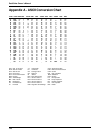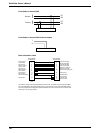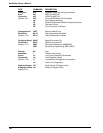
124
DataTalker Owner’s Manual
Appendix D - Flow Control Background
Flow control refers to techniques used by computer devices and the DataTalker to stop and
restart the flow of data between them. Flow control prevents a channel device or DataTalker from
receiving more data than it can handle. Flow control initiated by the DataTalker is called
DataTalker-initiated flow control. It might be needed, for instance, if a DataTalker is connected to
a minicomputer that can output more data than the DataTalker can handle. Flow control by the
channel device is called channel device-initiated pacing. Pacing might be required, for instance,
by a printer channel device that cannot print data as fast as the DataTalker can send it, or which
may need to go off-line when it runs out of paper. To state it simply, flow control is something the
DataTalker does to the channel device, while pacing is something the channel device does to the
DataTalker.
DATA DATA
Channel
Device
Channel
Device
CHANNEL DEVICE-
INITIATED PACING
DataTalker DataTalker
DATATALKER-INITIATED
FLOW CONTROL
Pacing stops the output of
data from the DataTalker
Flow control stops the input
of data to the DataTalker
Flow control can be software or hardware based. In software flow control, special characters
(XON and XOFF) are used to stop and start the flow of data. In hardware flow control the Clear
To Send (CTS) signal on the RS-232C interface (pin 5) is brought low to stop data and high to
restart it. When you select a flow control method with a DataTalker command you are also
selecting the corresponding pacing method.


















